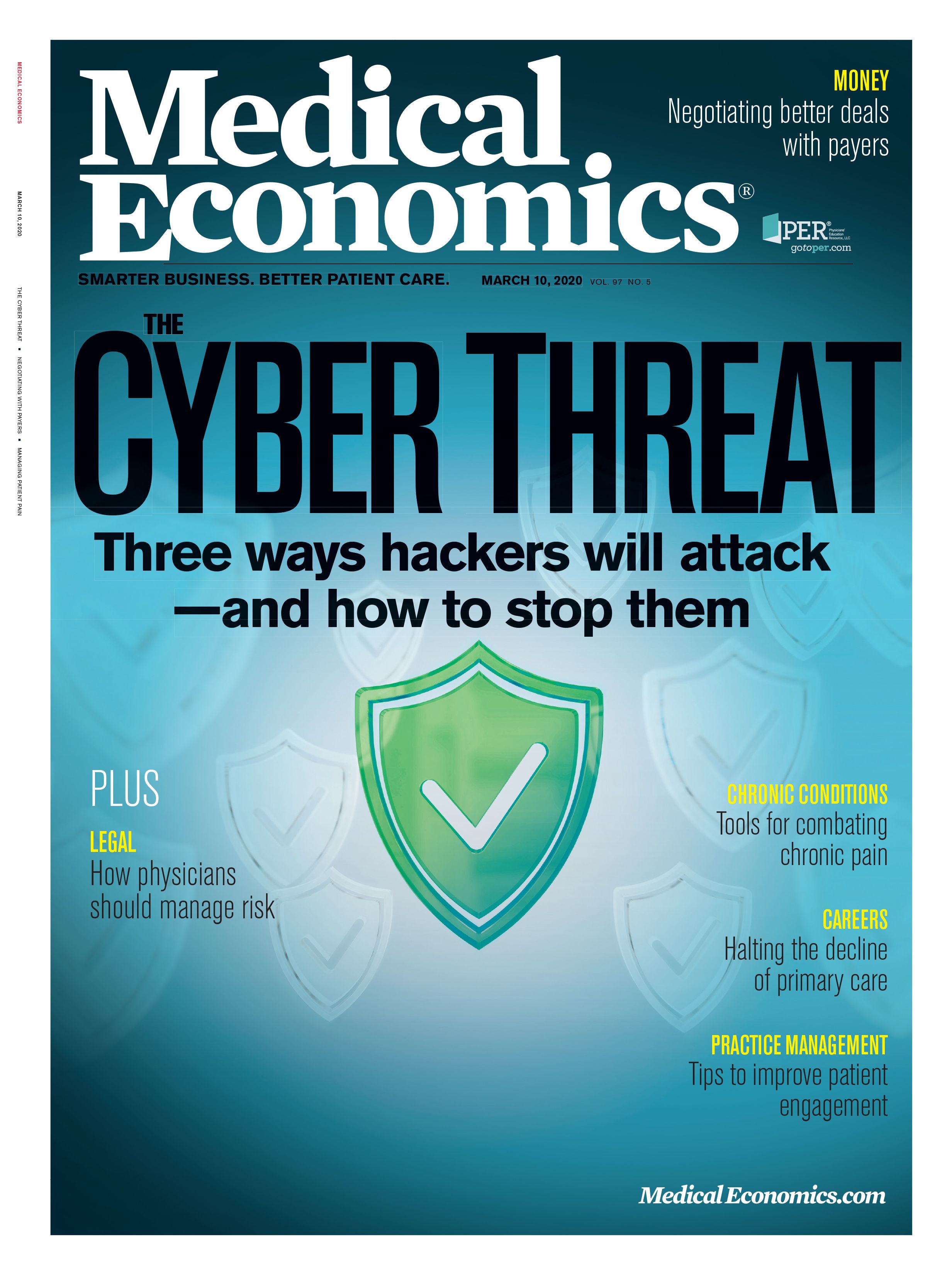
- Revenue Cycle Management
- COVID-19
- Reimbursement
- Diabetes Awareness Month
- Risk Management
- Patient Retention
- Staffing
- Medical Economics® 100th Anniversary
- Coding and documentation
- Business of Endocrinology
- Telehealth
- Physicians Financial News
- Cybersecurity
- Cardiovascular Clinical Consult
- Locum Tenens, brought to you by LocumLife®
- Weight Management
- Business of Women's Health
- Practice Efficiency
- Finance and Wealth
- EHRs
- Remote Patient Monitoring
- Sponsored Webinars
- Medical Technology
- Billing and collections
- Acute Pain Management
- Exclusive Content
- Value-based Care
- Business of Pediatrics
- Concierge Medicine 2.0 by Castle Connolly Private Health Partners
- Practice Growth
- Concierge Medicine
- Business of Cardiology
- Implementing the Topcon Ocular Telehealth Platform
- Malpractice
- Influenza
- Sexual Health
- Chronic Conditions
- Technology
- Legal and Policy
- Money
- Opinion
- Vaccines
- Practice Management
- Patient Relations
- Careers
Rein in hidden billing costs
Where do hidden billing costs typically exist-and how can practice leaders more effectively rein them in? Here are four common blind spots?

In physician practices, there are multiple billing pitfalls that threaten practice revenue. For every 10 physicians who provide care in the United States, nearly seven people provide billing support. Nationally, providers spend $282 billion per year on billing and insurance-
related costs-and half of these costs are considered excessive, a recent study found.
But too often, practice leaders fail to spot these revenue traps. The result: low cash collections, higher-than-necessary billing costs, and threats to patient satisfaction.
Where do hidden billing costs typically exist-and how can practice leaders more effectively rein them in? Here are four common blind spots.
Benefits and eligibility verification
This is the starting point for billing support, and it’s rife with inefficiency. Manual transactions take 10 minutes to perform, on average, and some last as long as 23 minutes. Yet while most providers have adopted electronic eligibility and benefits verification, this billing process remains the single biggest savings opportunity for medical providers to reduce administrative costs, at $3.4 billion.
Making the switch to electronic eligibility and benefits verification is about more than administrative efficiency. It can also reduce denials rework-especially when eligibility checks are run again prior to claim submissions to ensure patients’ coverage is still active. Registration and eligibility errors are the root cause of one-third of denials.
Claim status inquiries
Manual claim status inquiries are the costliest of any administrative billing expense tracked by the Council for Affordable Quality Healthcare (CAQH). Why? Manual inquiries require 14 minutes of staff time, on average, to complete, according to the 2018 CAQH Index. Electronic claim status inquiries, on the other hand, take just five minutes to complete. As a result, the savings opportunity in moving from manual to electronic status inquiries totals $2.6 billion among medical providers.
Out-of-pocket estimates
Given the impact out-of-pocket estimates have on practices’ ability to engage patients in the cost of their care, practice leaders should consider:
- Investing in tools that calculate patients’ out-of-pocket costs at the point of registration
- Training front-end staff to have financial discussions with patients prior to the point of service
- Publishing prices for common procedures
- Equipping physicians with cost information so they may engage in cost discussions with patients
Cash posting
For physician practices, cash posting is tedious, highly manual, and relegated to entry-level staff. It takes staff significantly longer to process paper-based check payments than electronic payments, according to an Association for Finance Professionals report. Paper checks also are five times more expensive to receive than e-payments. But the inefficiencies associated with manual payment posting result in more than lost productivity and higher transaction costs. They also threaten practice revenue-especially when errors in posting strangle a practice’s ability to follow up on underpayments. Patient loyalty also is put at risk, such as when errors in manual posting prompt staff to pursue higher balances than necessary.
These are just some of the reasons why automating cash posting makes financial sense for medical practices. It’s an approach that also provides real-time visibility into payments, streamlines remittance advice management, more quickly identifies opportunities to better manage denials, and reduces the costs associated with medical billing. One specialty practice saved 13 hours per day by automating its cash-posting processes, increasing productivity and freeing up staff to focus on more value-added activities.

2 Commerce Drive
Cranbury, NJ 08512
All rights reserved.